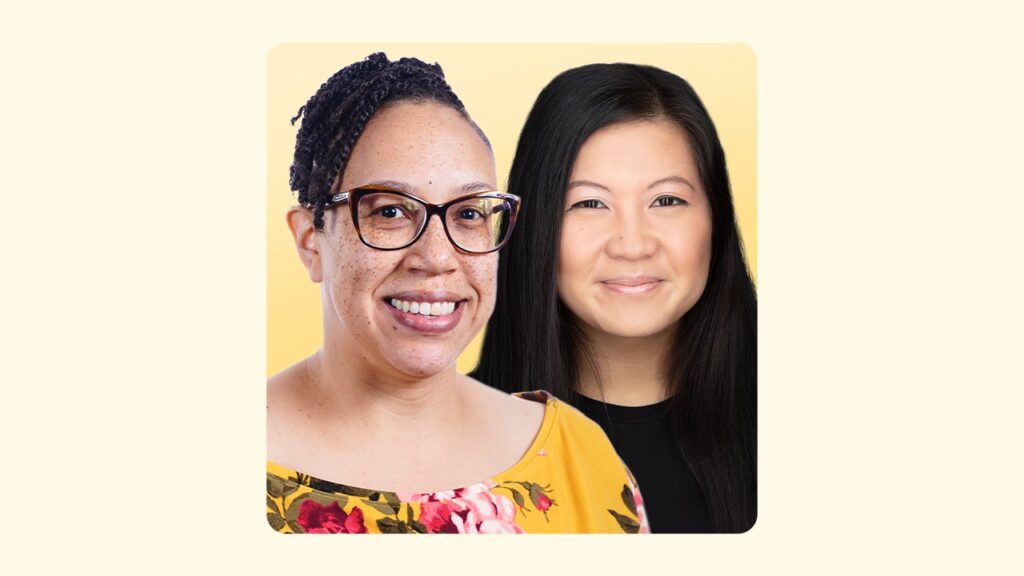It’s not everyday you get to hang out with some of America’s top female finance experts. Each year dozens of women share their knowledge and strategize together at FinCon’s Women in Money conference. It’s a significant moment considering that this year marks just 50 years since women were granted the right to get credit cards and other credit products on their own through the Equal Credit Opportunity Act.
As a peruser of plastic payments and a credit cards writer, it was the perfect opportunity for me to connect with money mavens across the financial spectrum and gather the tips and tricks they’ve used to create financial success for themselves. Of the many amazing women at FinCon’s Women in Money conference, I connected especially with financial influencers Bernadette Joy and Samara Diggs, who shared some tips they’ve used to pay off debt and put their clients on the road to financial stability.
1. Build a cash flow cushion
Whether you’re just starting out with credit cards or resetting your relationship with plastic, the last thing you want to do is allow credit card debt to spiral. If anyone knows how to keep their credit card balances in check, it’s Bernadette Joy.
She served as the phenomenal host of the Women in Money conference and mentors her clients to crush their money goals. She also paid off $300,000 of her own debt in just three years and is releasing her book, Crush Your Money Goals, in December 2024 to help others do the same.
“I would tell my younger self to have what I call a cash flow cushion first before I use a credit card regularly,” Joy says. “A cash flow cushion is having one month’s worth of expenses sitting in my checking account as a buffer so I’m not waiting for my next paycheck to pay off my bills.”
Joy also touts growing that cushion alongside reducing dependency on credit cards and not allowing the balance to creep up. In the event of a $1,000 emergency expense like car repairs or an urgent care visit, 56 percent Americans wouldn’t pay for it from their savings account, according to Bankrate’s 2024 Emergency Savings Report. When asked how they would cover that cost, 21 percent of U.S. adults said they would finance it with their credit card and pay it off over time.
So before you pay with plastic, know that cash is still king, and keep enough money on hand to cover life’s surprises.
2. Turn canceled subscriptions into extra payments

When you’re paying off credit card debt, your “money leaks” are among the first places to look for extra funds to put toward your debt. A money expert friend once told me that money leaks are the unnecessary costs flying right under your nose and out of your bank account. That includes costs like:
- Avoidable service fees
- Recurring subscriptions that have fallen out of use
- Free-trials that weren’t canceled
- Unused memberships
But you won’t find out where the leak is coming from unless you review your budget. Personal finance blogger Samara Diggs runs the Budget To Be Free blog and documented her journey paying off $30,000 of debt. She suggests people start the debt payoff journey by taking a hard look at their finances.
“Review your budget,” Diggs said. “Consider canceling any subscriptions or memberships you are not using. If you cancel any membership, apply that payment to your credit card debt. Then see if there are any other areas that can be cut back on.”
It’s easy to forget about subscriptions you no longer use or free trials you failed to cancel, but that’s money you could redirect toward paying off your credit card debt instead.
Alex Gailey, a lead data reporter at Bankrate, also attended the Women in Money conference and shared that she eliminated over $200 per month from her subscription costs when she performed her mid-year financial check-up.
For Gailey, the process only took 10 minutes. However if you have a ton of subscriptions and aren’t sure where to start, try using a subscription management app to help you through the process.
3. Choose debit over credit
Once you’ve identified your money leaks and reallocated your newly-found funds, it might be time to reconsider your relationship with your credit cards. As a money coach, Joy has helped many of her clients pay off debt and noticed a common struggle that gets in the way of their progress.
“I encounter many learners in my coaching programs who are still using the credit cards while also trying to pay it down. It just doesn’t work.”
— Bernadette Joy, Founder of Crush Your Money Goals and host of the Women in Money conference
And many card holders are tempted to keep using their credit cards to earn rewards or cover expenses even as they carry a balance. In fact, 67 percent of Americans with credit card debt still attempt to maximize their credit card rewards, according to Bankrate’s 2024 Chasing Rewards in Debt Survey.
Instead, Joy suggests choosing your debit card over your credit card until you’ve brought your balance to zero.
“This may sound obvious, but if you have any credit card debt, it’s best to pause using the credit card and moving all of your recurring bills to your debit until the credit card debt is cleared,” she advises.
There are a few benefits to taking this approach:
- You’ll clearly see the progress in paying down your balance.
- You’re not adding more to your balance, so your payments make more of a dent.
- It makes it easier to budget for your monthly payment.
- Doing so helps reduce your credit utilization, which can boost your credit score.
And if you really want to ensure you’re not using your credit card anymore, remember to remove it from your digital wallets as well as your physical wallet.
4. Start a side hustle
One of the tactics Diggs used to pay off her debts was picking up a side hustle for more income to dedicate to her debt payoff plan. In addition to her primary job, she worked part time as a virtual assistant, which helped her pay off her car loan a year and a half early. It’s a strategy she recommends.
“Use the skills that you have to make extra money. There are a lot of different options to work part time. You can Uber, or work for Instacart or be a virtual assistant. All the extra money you make can be applied to your credit card payment.”
— Samara Diggs, Personal finance blogger
If you decide to take this route, you’d be far from the only one doing it. Twenty percent of Americans with side hustles use the money to pay down their debt, according to Bankrate’s 2024 Side Hustle Survey.
5. Pay down $27.40 per day
Paying down credit card debt can feel overwhelming — especially if you have a large balance. One of the best ways to tackle any goal is to break it down into bite-sized chunks. That’s what Joy suggests for paying off credit card debt. Take the amount you’re aiming to pay off and divide it by 365 to get your everyday pay amount.
“Start with a goal of $27.40 a day to pay off every day,” Joy says. “If you do that every day, you can pay off $10,000 in a year.”
This can also be a helpful strategy if you’re planning to put a large purchase on your credit card or capitalizing on a 0 percent purchase APR offer. It might seem like a lot to make a credit card payment every day — and some credit card companies may even limit the amount of payments you can make each month — but if you set that amount aside each day then you’ll be able to make a hefty payment toward your credit card balance every two weeks.

EXPAND
The bottom line
In a world where women face unique financial challenges, it’s imperative to focus on building our wealth and financial literacy. When credit card debt is putting compound interest to work against you, there are a few ways you can get it under control and take steps towards financial stability and success. By getting clear on your budget, eliminating unnecessary expenses and working a pay off strategy, you can bring down your credit card balances and get back on the right track.
Take it from these fabulous female finance forces.
Read the full article here
















